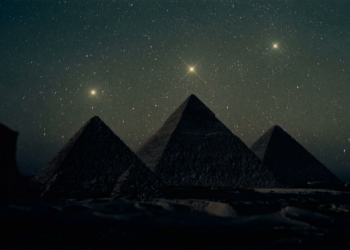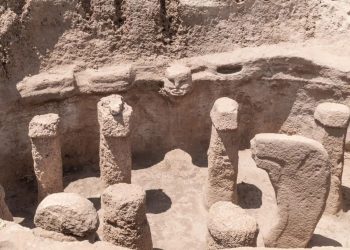To their surprise, a group of researchers has found an iconic Native American stone tool technology in Arabia. Between 13,000 and 10,000 years ago, Native Americans built intricate fluted point technology. It was thought, until recently, that this was unique to the Americas. A study carried out by archaeologists from the National Center for Scientific Research (CNRS) and the National Institute for Preventive Archaeological Research (INRAP) in France; Ohio State University in the United States and the Max Planck Institute for the Science of Human History in Germany have found iconic Native American stone tool technology in Arabia.
Found in Manayzah in Yemen
The artifacts involved are a series of fluted points found in the archaeological sites of Manayzah in Yemen, and Ad-Dahariz, in Oman. Details of the tools have been published in the magazine ‘PLOS ONE.’ Fluted stone tools are a distinctive and technologically advanced form of projectile points, including spearheads and arrowheads “invented” in Northern America as far back as 13,000 years ago. It is a specific technique that involves the removal of an elongated scale along the tip of a projectile, leaving a distinctive groove or depression at the base of the spearhead or arrowhead.
A distinct technological tradition
It is a distinct technological tradition invented by the first human cultures that spread throughout the American continent. Striated-edge technology is well known in North America, as evidenced by discoveries across the continent that have been found to date back 10,000 to 13,000 years. As CNRS lead author Dr. Rémy Crassard points out, “Until the early 2000s, these fluted points were unknown elsewhere. When the first isolated examples of these objects were recognized in Yemen, and more recently in Oman, we recognized that there could be huge implications,” the researchers explained.

Dozens of fluted points
The Manayzah and Ad-Dahariz archeological deposits yielded dozens of fluted points. The Arab examples date from the Neolithic period, roughly 7,000 to 8,000 years ago, at least two thousand years later than the American examples. Professor Petraglia from Max Planck explains, “Given this age and the fact that the fluted points of America and Arabia are thousands of kilometers apart, no reasonable cultural connection links them. This is a clear and fine example of convergence culture or independent invention in human history. ” The recently-published study carefully examines the fluted points found in southern Arabia.
Similarities between American and Arab style
Detailed technological analyzes, backed by experiments with stone tools and expert and modern replication, illustrate the similarities between American and Arab styles. In addition to the similarities, the authors of the new study also investigated the contrasts between the technologies of the two regions. Technological differences were evident in nature and location. The authors emphasize that this method was likely a mental conceptualization of stone toolmaking rather than a technical way of producing a projectile.
The concept is the same; the end goal is different
It is noteworthy that while the apparent function of the American fluted points is to facilitate dragging or to attach the point to an axis, most Arabic fluted points do not have drag as a functional end goal. The concept and the method are the same in America and Arabia, but the end goal seems different. Arabian and American fluted points technologies were highly specialized stone tool production methods.
The study of Arab technology shows that similar innovations and inventions developed under different circumstances and that such highly skilled and convergent production methods can have different anthropological implications.
Have something to add? Visit Curiosmos on Facebook. Join the discussion in our mobile Telegram group











